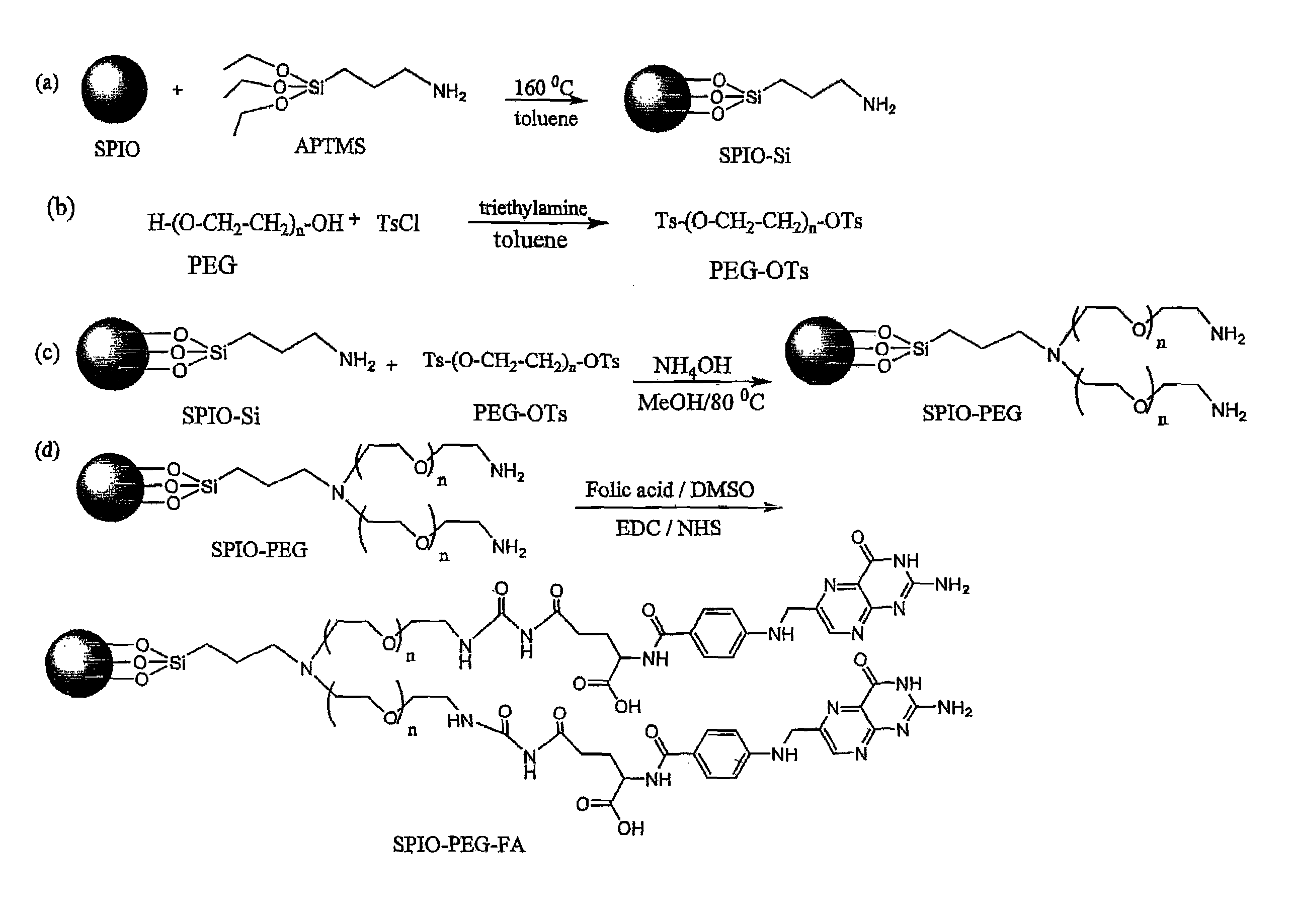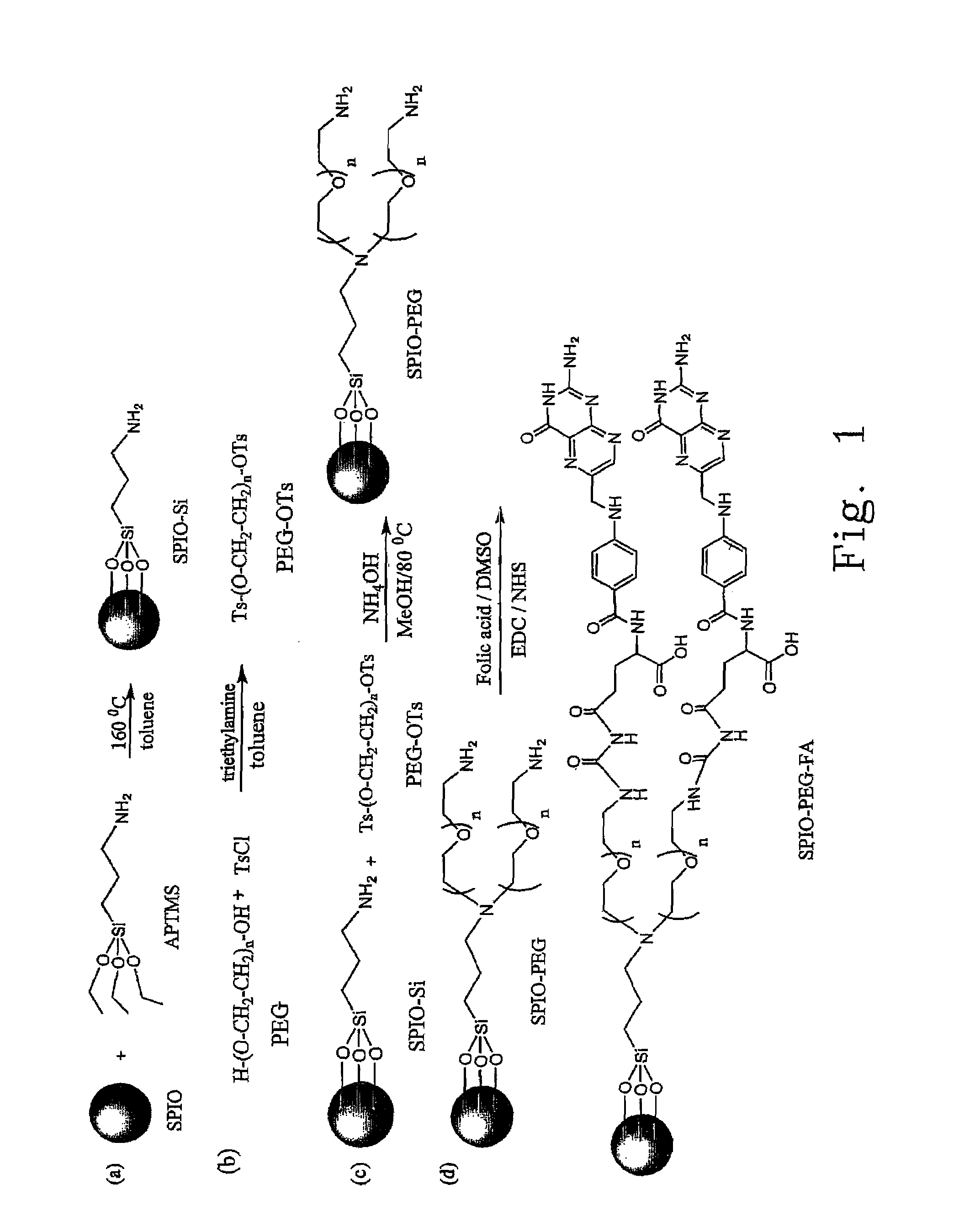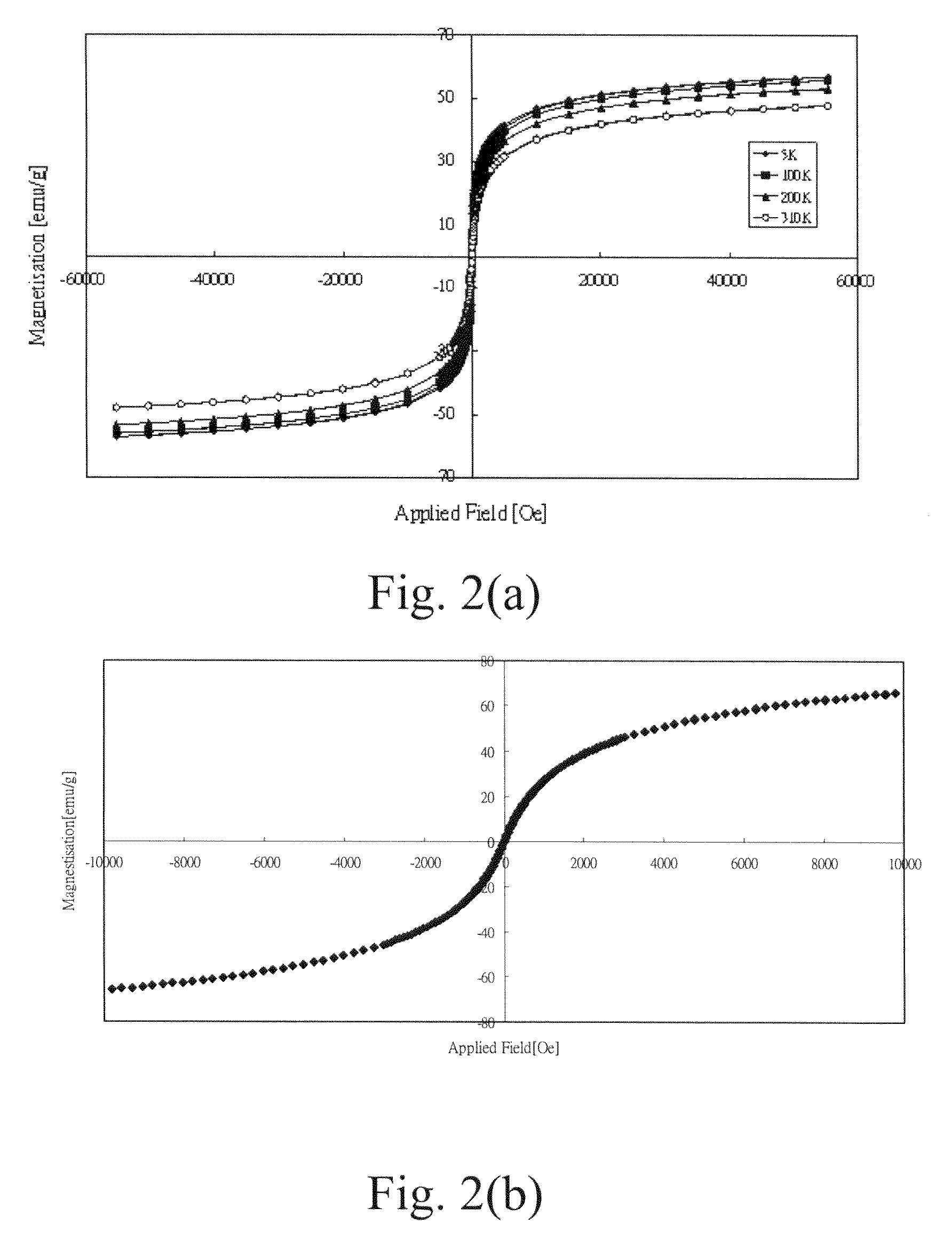Folate-receptor-targeting iron oxide nanoparticles coated with poly(ethylene glycol)
a technology of iron oxide nanoparticles and polyethylene glycol, which is applied in the field of contrast agents, can solve the problems of oxide nanoparticles not reaching the target tissue cells, narrow application, and inability to achieve the effect of target tissue cells
- Summary
- Abstract
- Description
- Claims
- Application Information
AI Technical Summary
Benefits of technology
Problems solved by technology
Method used
Image
Examples
first embodiment
[0048]The present invention provides the PEG compounds with three different molecular weights as the preferred embodiments. As illustrated in the step (b) of FIG. 1, the average molecular weight (Mn) of PEG in the present invention is 400 Dalton (hereinafter named as PEG(400)). Dissolve 12.3 g (62.5 mmole) of toluene-4-sulfulenyl chloride (TsCl) in 200 ml of the toluene solution to give a solution A. Dissolve 10 g (25 mmole) of PEG(400) and 9.53 ml (68.75 mmole) of triethylamine (TEA) in 50 ml of the toluene solution for a vigorous agitation to give a solution B. Then, slowly add the solution B into the solution A, and the reaction is continued for 24 hours at the room temperature. Subsequently, extract the resultant solution with H2O / toluene and condense the toluene layer by means of the vacuum condenser, followed by washing the remaining TsCl with hexane and being dried by a vacuum system. Accordingly, 16.72 g (23.6 mmole) of toluene-4-sulfulenyl PEG(400) (PEG(400)-OTs) is obtaine...
second embodiment
[0050]As illustrated in the step (b) of FIG. 1, the average molecular weight (Mn) of PEG in the present invention is 1000 Dalton (hereinafter named as PEG(1000)). Dissolve 12.3 g (62.5 mmole) of TsCl in 250 ml of the toluene solution, and add 25 g (25 mmole) of PEG(1000) and 9.53 ml (68.75 mmole) of TEA into the resultant solution where the reaction is continued for 48 hours at the room temperature. Subsequently, filter the resultant solution and extract the filtered solution with H2O / toluene. Condense the water layer by means of the vacuum condenser, and dissolve the resultant condensate in a chloroform (CHCl3) solution, followed by performing a filtration. Further, condensate the filtered solution by means of the vacuum condenser. Accordingly, 30.7 g (23.5 mmole) of toluene-4-sulfulenyl PEG(1000) (PEG(1000)-OTs) is obtained and the yield could be achieved to 93.7%.
[0051]1H-NMR (400 MHz, CDCl3) of PEG(1000)-OTs are provided as below: δ (ppm): 2.410 (s, 6H, —C6H4—CH3), 3.539-3.655 (...
third embodiment
[0052]As illustrated in the step (b) of FIG. 1, the average molecular Weight (Mn) of PEG in the present invention is 2000 Dalton (hereinafter named as PEG(2000)). Dissolve 12.3 g (62.5 mmole) of TsCl in 250 ml of the toluene solution, and add 50 g (25 mmole) of PEG(2000) and 9.53 ml (68.75 mmole) of TEA into the resultant solution where the reaction is continued for 48 hours at the room temperature. Subsequently, filter the resultant solution and extract the filtered solution with H2O / toluene. Condense the water layer by means of the vacuum condenser, and dissolve the resultant condensate in a chloroform (CHCl3) solution, followed by performing a filtration. Further, condensate the filtered solution by means of the vacuum condenser. Accordingly, 53.5 g (23.2 mmole) of toluene-4-sulfulenyl PEG(1000) (PEG(1000)-OTs) is obtained and the yield could be achieved to is 93.6%.
[0053]1H-NMR (400 MHz, CDCl3) of PEG(2000)-OTs are provided as below: δ (ppm): 2.453 (s, 6H, —C6H4—CH3), 3.585-3.70...
PUM
| Property | Measurement | Unit |
|---|---|---|
| molecular weight | aaaaa | aaaaa |
| molecular weight | aaaaa | aaaaa |
| molecular weight | aaaaa | aaaaa |
Abstract
Description
Claims
Application Information
 Login to View More
Login to View More - R&D
- Intellectual Property
- Life Sciences
- Materials
- Tech Scout
- Unparalleled Data Quality
- Higher Quality Content
- 60% Fewer Hallucinations
Browse by: Latest US Patents, China's latest patents, Technical Efficacy Thesaurus, Application Domain, Technology Topic, Popular Technical Reports.
© 2025 PatSnap. All rights reserved.Legal|Privacy policy|Modern Slavery Act Transparency Statement|Sitemap|About US| Contact US: help@patsnap.com



